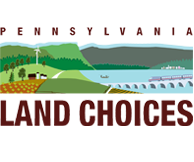Oil was formed from the remains of animals and plants (diatoms) that lived millions of years ago in a marine (water) environment before the dinosaurs. Over millions of years, the remains of these animals and plants were covered by layers of sand and silt. Heat and pressure from these layers helped the remains turn into what we today call crude oil. The word “petroleum” means “rock oil” or “oil from the earth.”
After crude oil is removed from the ground, it is sent to a refinery by pipeline, ship, or barge. At a refinery, different parts of the crude oil are separated into useable petroleum products. Crude oil is measured in barrels (abbreviated “bbls”).
Regulatory Oversight
The Bureau of Land Management (BLM), a bureau in the U.S. Department of the Interior, has jurisdiction over onshore leasing, exploration, development, and production of oil and gas on federal lands. In addition, the BLM approves and supervises most oil and gas operations on American Indian land.
The petroleum industry is also affected by a number of major environmental statutes and regulations overseen by the Environmental Protection Agency (EPA). Visit EPA website to learn more.
Additional Resources
Oil & Gas Extraction: Impacts, Risks & Regulations
Cauley, Michelle and John Peiserich. “An Overview of the State and Federal Environmental Regulation of the Oil and Gas Development of the Fayetteville Shale“. The Arkansas Lawyer (Spring 2009).






